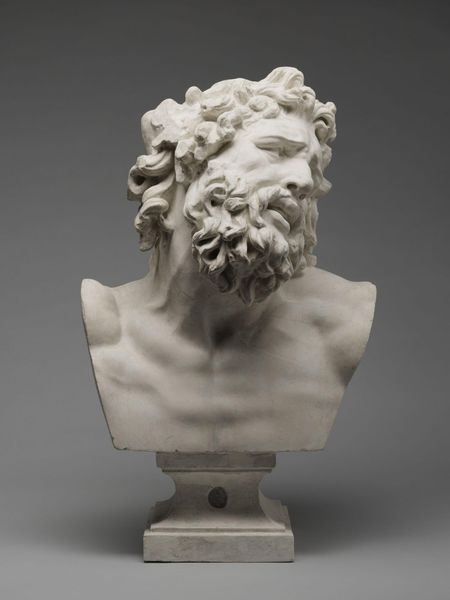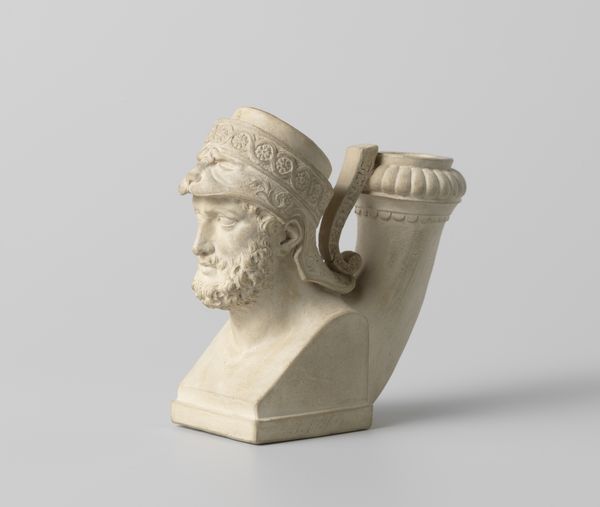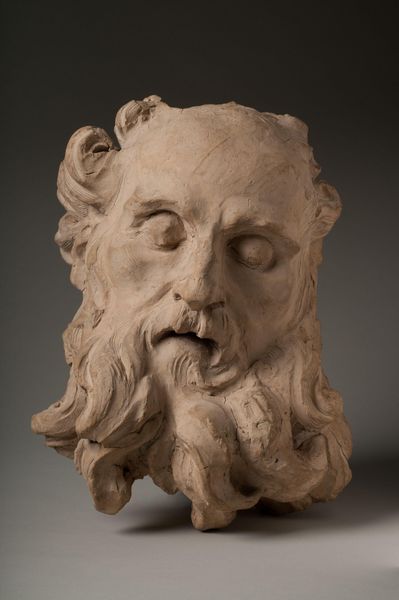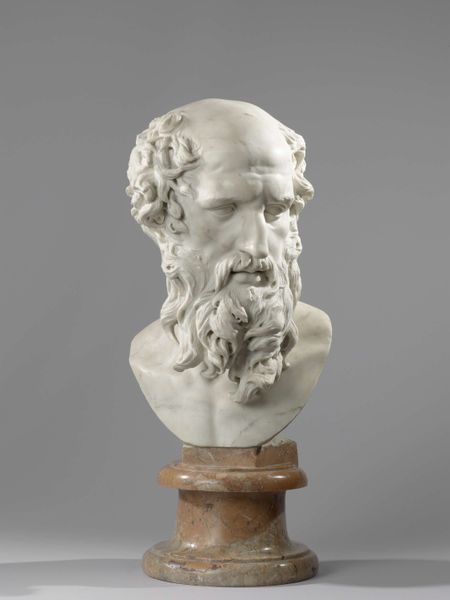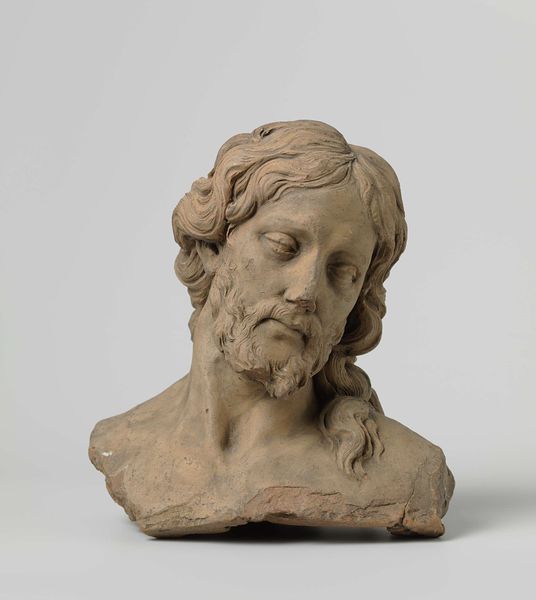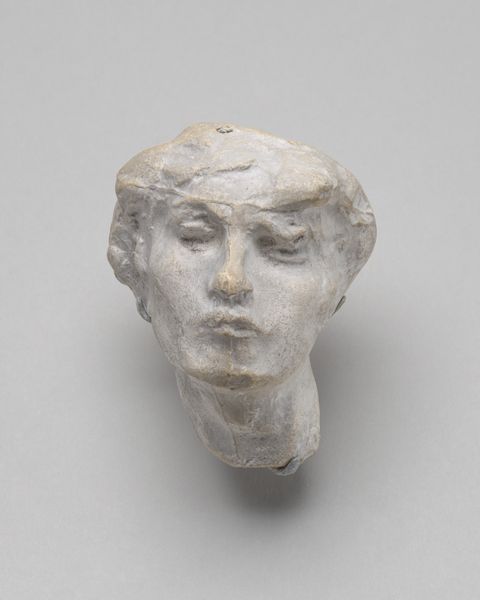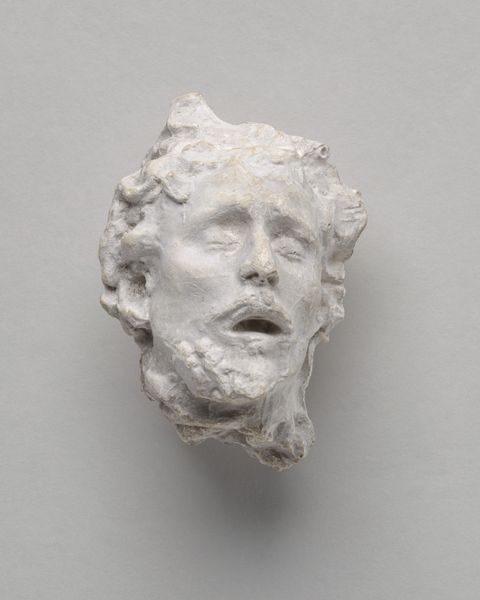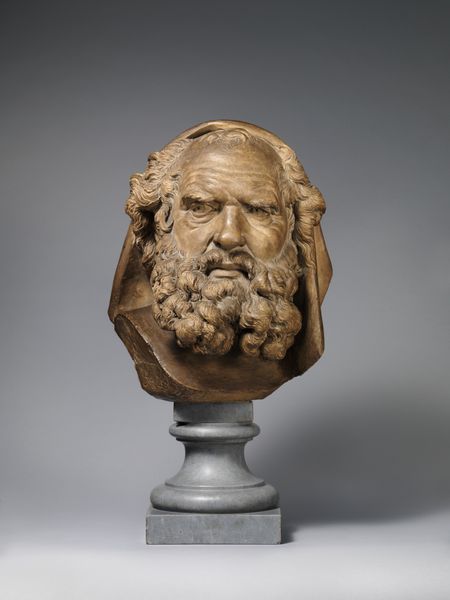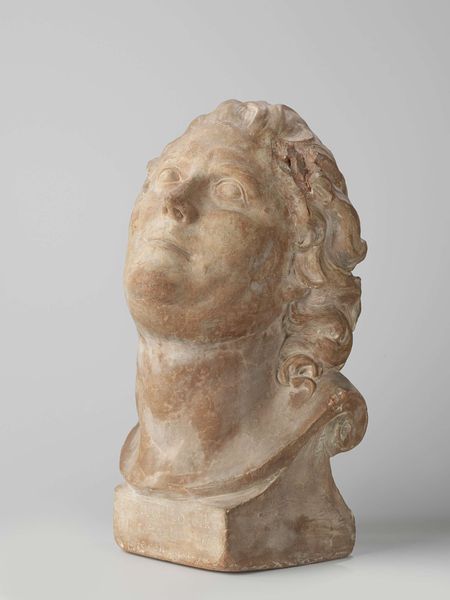
sculpture, marble
#
portrait
#
sculpture
#
greek-and-roman-art
#
classical-realism
#
roman-art
#
ancient-mediterranean
#
sculpture
#
academic-art
#
marble
Dimensions: H. 10 5/8 in. (27 cm)
Copyright: Public Domain
Curator: Standing before us is a marble head of Herakles, believed to be from the Roman Imperial Period, specifically between 1 and 199 AD, now residing at the Metropolitan Museum of Art. Editor: Heavy, doesn’t it feel? It's got this profound weight, not just physically as a chunk of carved marble, but emotionally. There's something deeply burdened in those carved eyebrows. Curator: Indeed. Historians often consider these portraits of Herakles as potent symbols of power within Roman Imperial ideology. The emperors frequently aligned themselves with the mythical hero's virtues. Editor: I see the politics, of course, but stepping away from that… his eyes, gazing downward. It’s like he’s contemplating the true cost of his strength. All that brute force, those impossible labors… where did it get him? The guy seems wrecked by his own legend, doesn’t he? Curator: Perhaps. Or consider the appropriation of Greek artistic models for Roman statecraft. Herakles, already a potent symbol in Greek culture, takes on new resonances within the expanding Roman empire, a translation of cultural power as well as artistic form. It's a dialogue across centuries. Editor: Dialogue implying, of course, a power imbalance, one voice doing most of the talking, re-shaping old stories in its own image, for its own benefit... The curl of the beard is fantastic, though. Those carvers were magnificent propagandists but clearly also dedicated to their craft. How much did they actually care about Roman emperors versus making lasting art? Curator: That interplay of aesthetics and power, intention and interpretation is fascinating, isn’t it? To what extent does an artwork willingly serve an agenda, and at what point does its meaning escape those imposed constraints to speak to us more universally? Editor: It’s that universal whisper beneath the grand historical pronouncements that I find more alluring. I wander through these galleries trying to get a sense for how they saw themselves in all their myths. That expression on his face transcends the Imperial project, doesn't it? It is a hard look into what legacy means. Curator: Beautifully put. A conversation through the ages then, not only about power and politics, but about strength, consequence, and what survives when empires fade. Editor: A reminder that even demigods carry burdens we might never imagine.
Comments
No comments
Be the first to comment and join the conversation on the ultimate creative platform.
